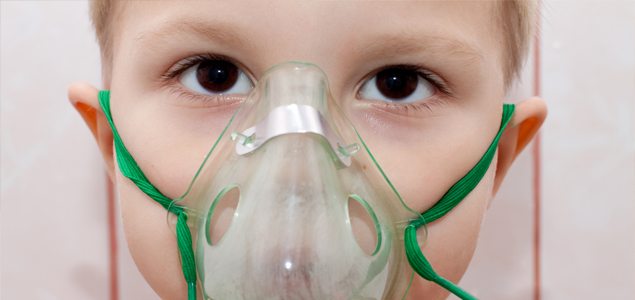No parent should see their child struggling to breathe however asthma in children continues to be one of the highest common causes to visit a local doctor and often leading to school absenteeism if admitted to hospital.
Spring is an exceptionally challenging time of year for children suffering asthma with an increase of pollen and irritants in the air.
Six-year-old Sam Gleeson of Fig Tree Pocket in Brisbane, Australia, is a long-time asthma sufferer and knows he has to ensure good asthma management so he can lead a normal healthy life, while taking medication to keep him well and avoid asthma attacks.
At the start of each school year, Sam’s mum Nikki Gleeson, shares his Asthma Action Plan with his teachers and closest friends so they are familiar with an immediate response for what steps to take should Sam have an asthma attack while at school.
Sam can show signs of worsening asthma, particularly after physical activity or energetic exercise, so each day; Sam has to ensure he has packed his preventers.
“Sammy is a bit of a special case,” says Sam’s mum, Nikki Gleeson. “He is quite hard to treat as he goes downhill so quickly. It generally will start with something like a runny nose, and progress into coughing and vomiting. That’s when we know it’s time to call the ambulance if we aren’t already at the hospital.”
“Sammy had his first asthma attack in June 2010. He had been coughing and vomiting, but not wheezing as his older brother Tim who also suffers from asthma had done, so we didn’t initially think it was asthma. We weren’t sure what we were dealing with. We drove him to hospital thinking it wasn’t anything serious, but was diagnosed with asthma once we got there. After six days there he took a turn for the worse.”
“Sammy started to go into respiratory failure,” said Nikki.
“I was holding him and I noticed his fingers went blue, then looked at his face and his lips were blue with white around them. A code blue was called and there were at least 14 people in our room trying to save him. The doctor’s couldn’t tell us if he would survive.”
“The Royal Children’s Hospital ICU team was called to retrieve him and he spent two nights in Intensive Care. Sammy has been treated at the Royal Children’s Hospital ever since. When we now go into the Emergency Department at the Royal Children’s Hospital, the nurses and doctors are familiar with him and now know how tricky he can be. They call him their frequent flyer.”
Professor Peter Sly, head of Children’s Lung, Environment and Asthma Research at Queensland Children’s Medical Research Institute said:
“Research is essential to preventing asthma attacks in children, and to stop asthma from developing. We are currently running a clinical trial at QCMRI to try and prevent asthma in infants, and another trial trying to prevent asthma attacks in adolescents. These studies are vital to help children like Sam who have asthma stay out of hospital.”
The cause of asthma is not known; however, a family history of asthma, allergies and colds early in life are risk factors for developing asthma. Children with sensitive airways can develop asthma at any time of their lives if they are exposed to certain trigger factors.
Professor Sly and his research team are focused on stopping asthma from developing by preventing colds during early life in the OMPAC trial which uses an oral liquid to prime the immune system in infants. His team is also researching preventing attacks of asthma by dampening the inflammatory response in the RELAX study which is currently underway, and in a new trial to start next year in adolescents with asthma.
What is Asthma? Asthma is a condition in which the airways of the lungs become inflamed and narrow, making it difficult for a child to breathe in and out. Asthma makes a child’s airways excessively sensitive or irritable (‘twitchy’). Inflamed airways can then lead to asthma attacks set off by a ‘trigger’ factor such as exercise or a viral infection. Things that cause the ‘twitchy’ or sensitive airways to become narrow include certain substances, certain things that happen around the child, or certain activities the child does.
The cause of asthma is not known; however, it can be hereditary. Children with sensitive airways can develop asthma at any time of their lives if they are exposed to certain trigger factors.
According to Asthma Australia, “it is important that the people around your child are aware if they have asthma, and know how to recognise symptoms and what to do in an emergency.”
A simple and inexpensive Australian product is gaining recognition both locally and overseas, in helping to prevent and assist those people who live with life-threatening medical conditions.
Medical wrist bands made from silicone are manufactured by Mediband and have life-threatening conditions or a combination of health conditions printed on them, such as diabetes; epilepsy; anaphylaxis warnings relating to dairy, gluten, wheat, soy, shell food or other food or drug allergies; and asthma.
Since the Mediband’s inception in 2005, over 230,000 people including the elderly and children are now wearing Mediband wrist bands in Australia, the United Kingdom and the United States.







